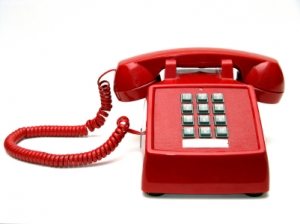
Aside from market research, telephone surveys can be employed for public opinion surveys, customer satisfaction surveys, loyalty studies, brand awareness and image research, market segmentation studies, and mystery shopping. In this type of survey, a call center agent makes outgoing calls to the phone numbers of the sample population. A typical market research conducted through a telephone survey involves determining the research goals and objectives; drafting, working out and pretesting the questionnaires; establishing the right sampling strategy; collecting data through telephone interviews; and evaluating and presenting the research outcome.
One of the major obstacles when conducting a telephone survey is being mistaken as telemarketing. As such, some people tend to refuse from participating. To avert this, those who will administer the survey are suggested to immediately address the respondents that they will not be asked to buy something, but rather answer a few questions regarding certain topics or pressing matters.
Steps in Conducting Telephone Surveys ( changed the heading)
- Establish your sampling strategy. Identify your sampling population and develop a system on how you can obtain the contact details of your target respondents. Set up a plan on how you will administer the telephone survey.
2. Design and create the questionnaire. In designing the survey questionnaire, take into account your goals and the nature of responses you are trying to elicit. Have a strategy that will let you easily obtain your desired information.
3. Pretest your survey. Pilot testing your survey will let you assess and gauge its efficiency and effectualness prior to actually using it in acquiring important data.
4. Conduct the survey. This includes random sampling of telephone numbers, determining the household member who is the most likely to provide the most significant input, calling the respondents and explaining to them amiably the intention of the telephone survey, and collecting data by asking questions.
5. Collect and input your data. The gathered information will have to be recorded, inputted, and stored in a computer so that a statistical software can quantitatively analyze it.
6. Analyze your survey data.
Pointers to Remember When Administering a Telephone Survey
- Segment lengthy survey topics. Survey topics that have very long questions will induce your respondents to be indifferent and inattentive. Create subtopics and make them as interesting as possible.
2. Assist the interviewer. Brief the interviewer regarding the strategies he/she can use in order to elicit the needed responses from the participants.
3. Be patient. Give your respondents enough time for them to ponder. Some participants may have some difficulty recalling past experiences concerning certain topics.
4. Be prepared. Create a long list of survey participants in case any of them are( is) unavailable. Ideally, if your target respondents for the day is 30, you should have at least 210 prepared contacts or 7 times than that of your target respondents.
5. Survey questions should also be plainly distinctly stated, otherwise, the survey will consume time. This must be avoided for respondents tend to drop the call if they cannot understand the questions or if the survey process takes time to complete.
Computer-Assisted Telephone Interview
A computer-assisted telephone interview or a CATI System is a system that helps interviewers in making their jobs easily. In here, the interviewer reads the questions that are displayed in the computer. The participants’ answers will then be inputted by the interviewer directly to the computer. This is basically three steps rolled into one: data entry, data editing, and data processing.
Pros of Telephone Surveys
- High response rate. Telephone surveys can generate 50-60% response rate.
- High accessibility. According to statistics, at least 95% of Americans have access to telephones or own one.
- Provides anonymity. Telephone surveys give the highest possible degree of anonymity than any other marketing survey technique can offer. This is ideal for respondents who want to be discrete when giving their views or opinions.
- Prompt and easy data management and data processing. Because of CATI system, analyzing, managing, and storing collected data is now smooth and fast. Real-time and previous data can also be examined using CATI.
- Interviewers can bring out more thorough and substantial responses in a telephone survey.
Cons of Telephone Surveys
- Cost. Compared to mail surveys, conducting telephone surveys is relatively expensive.
- Time constraints. There are time constraints associated in this type of survey. Usually, calling window is from 6:00 pm – 9:00 pm to avoid interrupting or disturbing the respondents. Telephone surveys should also be completed in 15 minutes max.
- Difficulty in reaching the sampling population. Most Americans screen their calls so they can only accept the calls they are anticipating.
- If the survey is conducted for marketing purposes, face-to-face interviews are more fitting than telephone interviews since respondents can better assess or evaluate a product if they can see it.
